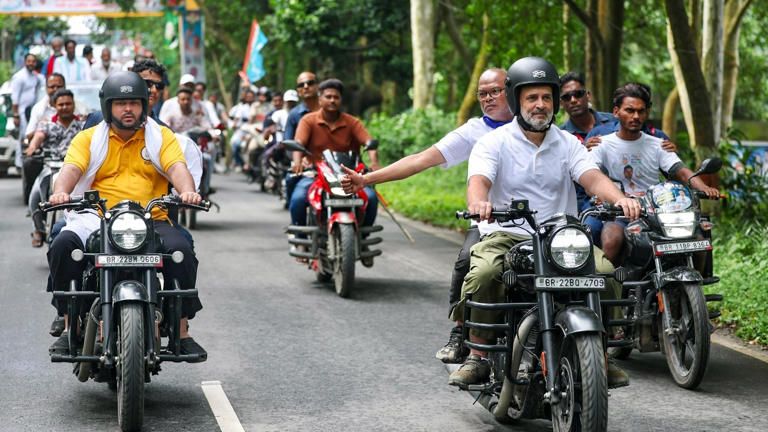“Bihar Election 2025 Heats Up: Nitish Promises Jobs, RJD Workers Rebel, Tejashwi Launches Yatra, NDA Eyes 225+ Seats”
The political temperature in Bihar is soaring as the 2025 Assembly elections approach. From bold promises and grassroots pressure to bold tours and digital voter reforms, the electoral battleground is buzzing like never before.
Chief Minister Nitish Kumar has opened the high-stakes campaign with a showstopping promise: over 10 lakh government jobs and 39 lakh employment opportunities delivered since 2020—numbers he vows will surge past 50 lakh before polling—and an ambitious goal of 10 million new jobs over the next five years. His pitch extends to development too—plans for free solar panel installations, upgraded hospitals, and self-employment initiatives aim to bolster welfare and public trust.
Meanwhile, inside the RJD camp, unrest simmers. Party workers rushed to Lalu Prasad Yadav and Rabri Devi’s residence demanding tickets—but not just that—they insisted on reservation of candidacies based on a transparent survey, rejecting handpicked, controversial names.
Not to be outdone, Tejashwi Yadav is launching a strategic yatra across districts that Congress left untouched, aiming to reassert grassroots influence and mend campaign gaps. This tour offers a sharp contrast to broader alliance efforts, positioning RJD as the real opposition force.
On the other side, the NDA is projecting confidence. Santosh Suman boldly predicts his coalition will sweep over 225 seats, asserting that all alliance partners will receive their due share. His rhetoric serves as both campaign motivation and strategic intimidation.
Election integrity has also become a flashpoint. The Supreme Court has ruled that Aadhaar cannot be used as standalone proof of citizenship for adding voters to the electoral roll during Bihar’s Special Intensive Revision (SIR), reinforcing safeguards in voter list legitimacy.
Meanwhile, the NDA is ramping up its outreach to women voters—rolling out emotional messaging in defense of women’s honor led by PM Modi, and building on Nitish Kumar’s pro-women policies to consolidate a growing female voter base. Opposition leaders, such as Tejashwi Yadav, have pushed back by refocusing attention on widespread youth unemployment.
On the campaign ground, both the BJP-led NDA and the RJD-led Opposition have held critical planning meetings. While Amit Shah steered BJP’s strategy from Delhi, state-level mobilization is underway. The Opposition mirrors this with intensified activity in Patna—pointing to a real battle in effectiveness, not just messaging.
This dynamic mix—job pledges, internal dissent, proactive tours, bold seat projections, legal scrutiny of voter lists, women-centric strategies, and parallel campaign machinery mobilization—paints a vivid picture of a high-stakes electoral showdown.
